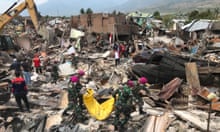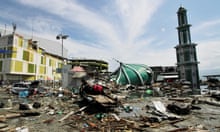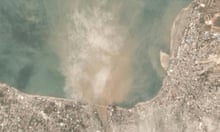This live blog is now closed but coverage continues here:
Tsunami in Indonesia: death toll at 832 and expected to rise sharply – as it happened
Vice-president warns deaths could be in the thousands after the earthquake and tsunami
Sun 30 Sep 2018 06.17 EDT
First published on Sun 30 Sep 2018 02.00 EDTLive feed
The confirmed death toll from the earthquake and tsunami that struck the Indonesian island of Sulawesi has risen to 832, and the vice-president, Jusuf Kalla, has warned it could reach into the thousands.
More than 150 aftershocks followed the 7.4 magnitude earthquake and subsequent tsunami which hit Sulawesi on Friday, causing thousands of homes, hotels, shopping malls and several mosques to collapse.
So far, 821 of the deaths were in the city of Palu, with 11 casualties recorded in Donggala, the worst-hit area which is home to 300,000 people. Hundreds of bodies have been found on beaches and authorities fear many may have been washed out to sea.
Read the full report:
What we know so far
What we learned from the press conference:
- A 7.4 magnitude earthquake hit the island of Sulawesi on Friday morning, causing a tsunami and around 170 aftershocks. It is the most devastating earthquake to hit Indonesia since 2004.
- The area devastated by the disaster is bigger than originally thought. The tsunami wave was as high as six metres in some places.
- The death toll is currently at 832 and expected to rise sharply. 821 of the deaths occurred in the city of Palu. There are still only 11 casualties recorded in the city of Donggala, one of the worst hit areas
- Bodies are now being buried in mass graves once they have been identified.
- The city of Palu has been devastated. There is no electricity and drinking water is in short supply after the pipes were damaged. Fuel is also running low.
- A search and rescue team are working to retrieve 50 people trapped in the ruins of the Roa Roa hotel in Palu. Voices have been heard screaming from the wreck of the 8-storey building.
- Rescue operations are hindered by the lack of heavy equipment needed to shift the rubble. Most search and rescue of victims is being done by hand.
- Indonesia’s President Joko Widodo has arrived in Palu and is inspecting the damage
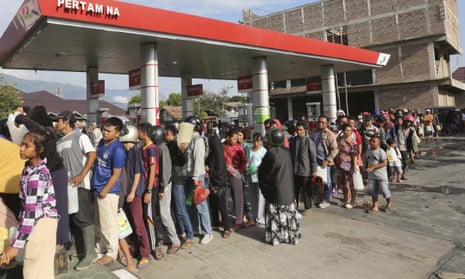
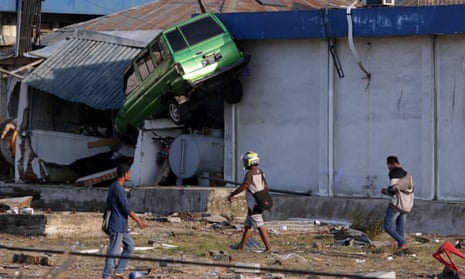
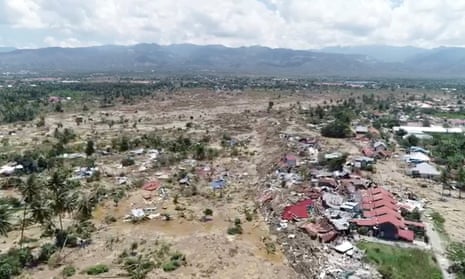
The affected area is bigger than originally thought. Only 11 deaths have been reported so far from Donggala, the worst hit area, so casualties are expected to rise sharply when rescue teams gain access
Supoto’s press conference has now ended. We will have full details here imminently.
The number of earthquake and tsunami victims in Palu City continued to increase, said Supoto. There are currently 261 people at Bhayangkara Hospital in Palu and getting higher by the hour.
Yesterday 87 bodies were identified by the National Police DVI Team. The identification process continues
The evacuation of the victims buried in the earthquake at the Roa-Roa Hotel in Palu City continues to be carried out by a search and rescue team, coordinated by the disaster agency.
“There are 50 people under the rubble of the building. Heavy equipment is needed for evacuation,” said Sutopo
Sutopo confirmed that the tsunami waves had been as high as six metres in some places
There is no electricity in the area as five power stations have been damaged and the pipe network for clean drinking water has also been severely damaged. There is also very limited access to fuel for vehicles.
Bodies are now being buried in mass graves, according to Sutopo.
“Many victims were buried en masse due to health considerations. And victims who died were buried after being identified through DVI, face recognition, fingerprints,” he said.
Sutopo said access to Donggala, as well as the towns of Sigi and Boutong, is still limited and there are no comprehensive reports from those areas.
He said: “The death is believed to be still increasing since many bodies were still under the wreckage while many have not able to be reached.”

